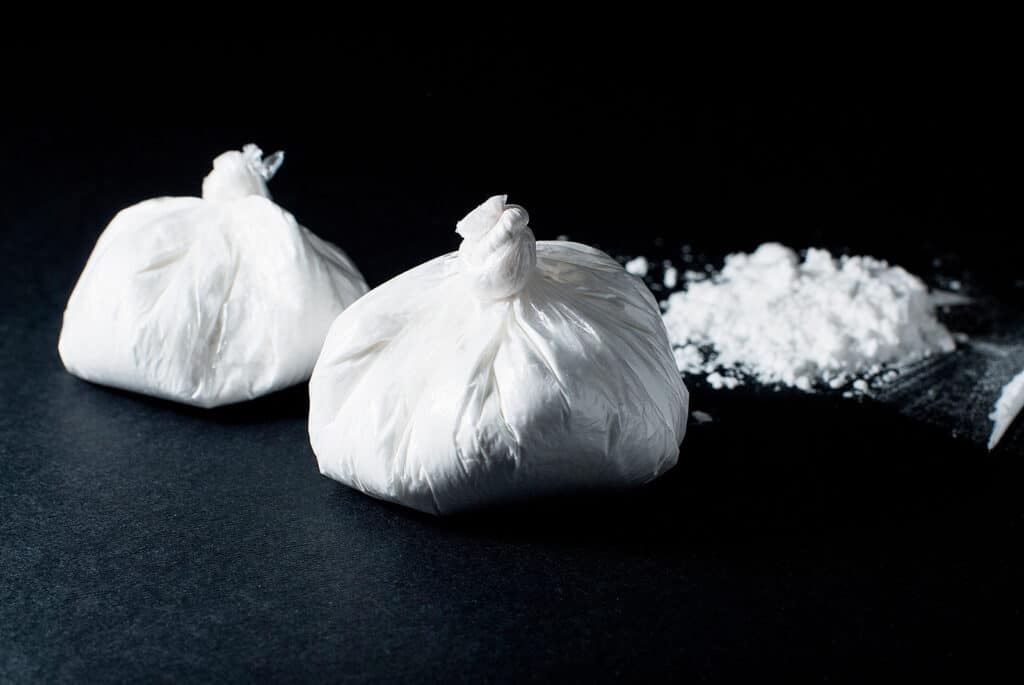Chances are that most people have heard the phrase “eight ball of coke” at some point within the past. Seemingly omnipresent in Hollywood movies and TV shows, it’s often shortened to just an “eight ball.” But what does this phrase mean, exactly? When an American drug dealer refers to an eight ball, they are likely describing 3.5 grams of coke, which translates into one-eighth of an ounce. The term seemed to start popping up during the height of the cocaine craze in the 1980s.
Table of Contents
- Cocaine: the Truth behind the Glamorous Façade
- When Doctors Take to TikTok to Warn People of the Hazards of Cocaine
- Was Cocaine Really in Soda? A Brief History of Cocaine
- The Early 1900s: Cocaine Users Notice Some Downsides
- The 1980s
- Sold in Kilos: the Business of Cocaine
- How Much Is an Eight Ball of Cocaine?
- Why Is Cocaine So Addictive?
- Cocaine Can Destroy Communities and Families
- The First Step Is Admitting You Need Help
Cocaine: the Truth behind the Glamorous Façade
When watching films like “Blow”, it can be easy for many viewers to get caught up in the façade of fast money and travel; one may start to believe that there are no consequences for cocaine use. This ethos, however, could not be further from the truth. While drug lords such as Pablo Escobar and El Chapo lived the high life for years, making billions of dollars, both of their empires came down with a crashing thud. But one does not have to be a drug lord to suffer the consequences of snorting and dealing cocaine. In fact, many times, the horrifying aftereffects of cocaine abuse are felt by innocent people such as the loved ones of frequent cocaine users.
When Doctors Take to TikTok to Warn People of the Hazards of Cocaine
Although many seem to be suffering from the false perception that cocaine no longer affects Americans the way it did in the 1980s during Escobar’s reign, ER doctors have recently been taking to social media platforms such as TikTok to share how just a few lines of cocaine can destroy someone’s life or even kill them. Of course, the medical literature on this topic supports what the doctors are saying; it is possible for a person to snort only a few grams of cocaine and then experience a cardiovascular event (e.g. a heart attack) that leads to their death.
Was Cocaine Really in Soda? A Brief History of Cocaine
Although cocaine is relatively new to many enclaves of society, having been around in its current form for a little over a century, indigenous people in South America have been consuming the coca plant — from which it is derived — for thousands of years. When chewing on the leaves of this plant, they noticed short-term effects, namely a burst of energy in their bodies. Back in the 1500s, European explorers to the Andes region took note of the effects of the coca plant as well. Three centuries later, two German chemists would change everything. In 1855, a chemist and pharmacist named Friedrich Gaedcke was able to isolate cocaine’s alkaloid from the leaves of the plant. Seven years later, his countryman Albert Neimann would up the ante by distilling cocaine in its pure form. After this occurred, it wasn’t long before the drug was being put to use by the medical community and even included in an ingredient in tonics — not to mention America’s favorite drink, Coca-Cola. The drug would remain as an ingredient in the soda until 1904.
The Early 1900s: Cocaine Users Notice Some Downsides
In the beginning, cocaine had a lot of fans. Sigmund Freud famously sang its praises in a letter to his wife, mentioning a lecture he had done. “Despite the lack of preparation, I spoke quite well and without hesitation, which I ascribe to the cocaine I had taken before hand.” However, not everyone was having such a successful time with the drug. Many had noticed that powder cocaine made them jittery, elevated their heart rate and blood pressure, and caused insomnia and psychosis alongside a plethora of other health problems. It wasn’t long before law enforcement was stepping in to regulate the substance use of cocaine. In 1913, Dr. Abraham Glickstein, who was accused of running a mail order cocaine business, defended himself in court by stating that he was permitted to prescribe cocaine as a physician.
The 1980s
It was in the 1980s, however, that the United States experienced a true cocaine boom. As the streets of many American cities — especially Miami — were awash in violence due to the cocaine epidemic, President Ronald Reagan and his wife, Nancy, declared a war on drugs. It was during this intense time that the short-term and long-term effects of cocaine became very well-known. Users noticed that the drug increased their alertness and made them more chatty. They liked the confidence and boost of energy the drug gave them, but they did not like the withdrawal symptoms or constant cravings for more cocaine.
Sold in Kilos: the Business of Cocaine
Traditionally, cocaine has been sold in kilogram bundles; traffickers have found that this is the unit that works best for them. Unsurprisingly, cocaine cost is usually lower in South America because the drug is closer to its source and has not been processed by so many middlemen. Users in North America, however, will often complain that their cocaine has been “stepped on” too many times by the time they get it. This means that dealers have added filler ingredients in order to spread out their supply and maximize profits. Dealers will cut their coke with a myriad of different ingredients, sometimes mixing the drug with baby laxatives or talcum powder. By the time the final consumer receives the drug in a North American city, the purity may be hovering around the 60% mark. Of course, the cost and purity of cocaine varies widely based upon what’s happening on the planet. During the COVID-19 pandemic, for example, many cocaine users in the United States felt that their access to the drug was much more limited due to the lockdown.

How Much Is an Eight Ball of Cocaine?
Again, cocaine cost tends to fluctuate a great deal based upon world events — and the laws of whatever land a cocaine user may happen to find themselves in. When the penalty for a drug-related offense like a cocaine overdose is death, such as it is in some areas of the Middle East, the price of cocaine skyrockets because dealers are less likely to take big risks. However, there are some areas of the world where it is just harder for people to acquire even an ounce of cocaine, such as Australia. As a result, the cost of an eight ball in Australia was around $1,000 in 2023.
Why Is Cocaine So Addictive?
For a long time, it has been known that cocaine wields the power to ruin lives. Because it amps up dopamine levels in the body, users experience a euphoric high. Many times, they want more of the drug right away. After a user has been doing coke for a while, their body will adjust to the cycle of their usage, eventually becoming tolerant of the drug. This means that the person will have to keep increasing the amount of cocaine they take in order to experience the same kind of high.
Cocaine Can Destroy Communities and Families
Unfortunately, cocaine can wreak complete havoc upon a person’s life. The side effects of the drug — combined with the exorbitant cost — make for a disastrous mix. The crack cocaine epidemic of the 1980s revealed just how easily the drug can shatter entire cities. One silver lining for people seeking addiction treatment now, though, is that treatment centers now have upwards of 40 years of experience with treating cocaine addictions. Counselors and administrators understand what it takes to get off the drug for good. It can be extremely difficult — and cocaine detox is particularly exhausting — but many former cocaine addicts have gone on to live productive and successful lives.
The First Step Is Admitting You Need Help
One of the reasons that cocaine can be notoriously difficult to treat is that it has a reputation as a “party” drug. For every person suffering from addiction, there is a person who can use the drug once a year and not suffer many consequences. But what does a person with a history of substance abuse do when the party is over and they’re still going through a few eight balls of coke every week? It may be time to contact the team at Long Island Treatment Centers. With a great deal of experience treating cocaine addictions — and helping clients to create new, more positive neural pathways, this group is truly committed to helping people make the changes they need in order to transform their lives. We offer both inpatient and outpatient treatment programs as well as medical detox. Also, there may be some weekend cocaine users who would benefit from consulting with the center. With this drug, it is unbelievably easy to slip from casual drug use into something more frequent. Anyone who feels like they may be on the precipice is encouraged to reach out and make sure they’re protecting their well being by taking this proactive step.


